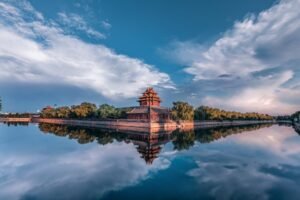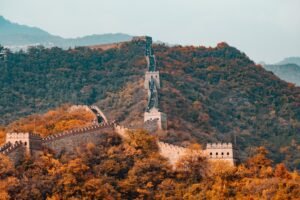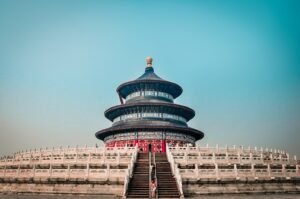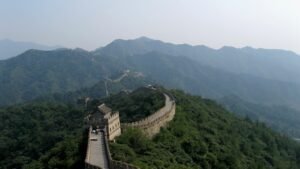China is a vast and diverse nation, home to an impressive array of cultures, languages, and traditions. The country officially recognises 56 ethnic groups, each contributing to the rich tapestry of Chinese society. This remarkable diversity is not merely a statistic; it represents a multitude of histories, customs, and worldviews that have evolved over millennia.
The Han Chinese, the largest ethnic group, accounts for approximately 91% of the population, while the remaining 55 groups, often referred to as minority ethnic groups, add depth and variety to the national identity. The existence of these ethnic groups is a testament to China’s long and complex history. From the nomadic tribes of the north to the agricultural communities in the south, each group has adapted to its environment and developed unique cultural practices.
Understanding these ethnicities is crucial for appreciating the full scope of China’s heritage and the dynamics that shape its contemporary society. As we delve deeper into the characteristics of these groups, we will uncover the intricate relationships between them and the broader narrative of Chinese history. Start learning Chinese today at the LC Chinese School in Oslo.
Table of Contents
ToggleSummary
- China is home to 56 ethnic groups, each with its own unique culture and traditions.
- The Han Chinese make up the majority of China’s population, comprising over 90% of the total population.
- The 55 minority ethnic groups in China contribute to the country’s rich cultural diversity, each with its own language, customs, and traditions.
- Western China is home to a diverse range of ethnic groups, including the Tibetan, Uighur, and Kazakh people.
- Central and Eastern China also have a variety of ethnic groups, such as the Zhuang, Hui, and Miao people, each with their own distinct cultural practices and heritage.
Han Chinese: The Majority Ethnic Group
The Han Chinese are not only the largest ethnic group in China but also one of the oldest continuous civilisations in the world. With a history spanning over 5,000 years, the Han have played a pivotal role in shaping China’s cultural, political, and social landscape. Their language, Mandarin, is the most widely spoken language globally, serving as a unifying force among the diverse populations within China.
The Han’s influence extends beyond language; their customs, festivals, and philosophies have permeated various aspects of life in China. Despite their majority status, the Han Chinese are not monolithic. There are numerous regional dialects and cultural variations within this group, reflecting the vast geographical expanse of China.
From the spicy cuisine of Sichuan to the delicate flavours of Cantonese dishes, Han culture is rich and varied. However, it is essential to recognise that this majority status can sometimes overshadow the voices and contributions of minority groups, leading to a complex interplay of cultural dynamics within the nation.
The 55 Minority Ethnic Groups
The 55 minority ethnic groups in China are incredibly diverse, each with its own distinct language, customs, and traditions. These groups range from the well-known Tibetans and Uighurs to lesser-known communities such as the Miao and Dong. Each group has its own unique identity shaped by historical experiences, geographical locations, and social structures.
For instance, the Tibetan people have a rich spiritual heritage deeply intertwined with Buddhism, while the Uighurs have a culture influenced by Central Asian traditions. The languages spoken by these minority groups are equally varied, with some having their own writing systems while others rely on oral traditions. This linguistic diversity is a vital aspect of their cultural identity and plays a crucial role in preserving their histories and traditions.
However, many minority languages are at risk of extinction due to the dominance of Mandarin and other major languages in education and media. This situation highlights the importance of recognising and valuing linguistic diversity as part of China’s broader cultural heritage.
Ethnic Groups in Western China
Western China is home to several prominent ethnic groups that contribute significantly to the region’s cultural landscape. The Tibetans inhabit the Tibetan Plateau, where their unique customs and practices are deeply rooted in Buddhism. Tibetan culture is characterised by vibrant festivals, traditional music, and intricate art forms such as thangka painting.
The harsh yet beautiful landscape has shaped their way of life, fostering a strong sense of community and spirituality. In addition to Tibetans, the Uighurs are another significant ethnic group in Western China, primarily residing in Xinjiang. Their culture reflects a blend of Turkic influences and Islamic traditions, evident in their cuisine, music, and clothing.
The Uighurs are known for their hospitality and vibrant celebrations, which often feature traditional dances and songs. However, this region has faced challenges related to cultural preservation and human rights issues, making it essential to understand the complexities surrounding these communities.
Ethnic Groups in Central China
Central China is a melting pot of various ethnic groups that contribute to its rich cultural heritage. Among them are the Hui people, who are predominantly Muslim and have integrated Islamic practices with Chinese customs. The Hui community is known for its delicious cuisine, which features halal dishes that reflect their unique identity while also embracing elements of Han culture.
Another notable group in Central China is the Miao people, renowned for their intricate embroidery and vibrant festivals. The Miao celebrate various traditional events throughout the year, showcasing their rich folklore through music and dance. Their customs often revolve around agricultural cycles and ancestral worship, highlighting their deep connection to nature and community.
The diversity within Central China illustrates how different ethnic groups coexist while maintaining their distinct identities.
Ethnic Groups in Eastern China
Eastern China is primarily associated with the Han Chinese; however, it is also home to several minority groups that enrich its cultural landscape. The Zhuang people are one such group, primarily found in Guangxi province. They have a rich tradition of folk songs and dances that celebrate their agricultural lifestyle and connection to nature.
Zhuang culture is also marked by unique festivals that attract visitors from across the country. Another significant minority group in Eastern China is the Yao people, known for their colourful clothing and elaborate rituals. The Yao celebrate various festivals throughout the year that highlight their agricultural practices and spiritual beliefs.
Their customs often involve intricate ceremonies that honour ancestors and seek blessings for bountiful harvests. The presence of these minority groups in Eastern China serves as a reminder of the region’s diverse cultural heritage.
Unique Cultures and Traditions of Different Ethnic Groups
The unique cultures and traditions of China’s ethnic groups are a testament to their resilience and creativity in preserving their identities over time. Each group has developed distinct art forms that reflect their histories and values. For instance, the Dong people are famous for their polyphonic singing style known as “kam,” which showcases their musical talent and communal spirit.
This tradition not only serves as entertainment but also strengthens social bonds within their communities. Similarly, the Naxi people have a rich tradition of storytelling through their ancient pictographic script known as “Dongba.” This script is used to record religious texts and historical narratives, preserving their unique worldview for future generations. The Naxi’s connection to nature is also evident in their art forms, which often depict local landscapes and spiritual beliefs.
These artistic expressions highlight how each ethnic group uses creativity to convey its identity while fostering a sense of belonging.
Challenges Faced by Minority Ethnic Groups
Despite their rich cultural heritage, many minority ethnic groups in China face significant challenges that threaten their way of life. One major issue is the pressure to assimilate into mainstream Han culture, which can lead to the erosion of unique languages and traditions. As Mandarin becomes increasingly dominant in education and media, many minority languages are at risk of extinction, jeopardising cultural diversity.
Additionally, socio-economic disparities often affect minority communities disproportionately. Many ethnic minorities live in remote areas with limited access to education, healthcare, and economic opportunities. This marginalisation can lead to feelings of disenfranchisement and disconnection from national identity.
Addressing these challenges requires concerted efforts from both government authorities and civil society to ensure that minority voices are heard and valued.
Efforts to Preserve and Promote Ethnic Diversity
Recognising the importance of preserving ethnic diversity, various initiatives have been implemented at both local and national levels in China. The government has established autonomous regions for certain minority groups, granting them some degree of self-governance while promoting cultural preservation efforts. These regions often celebrate traditional festivals and support initiatives aimed at revitalising endangered languages.
Non-governmental organisations (NGOs) also play a crucial role in advocating for minority rights and promoting cultural awareness among broader society. Through educational programmes, cultural exchanges, and community development projects, these organisations work tirelessly to empower minority communities while fostering mutual respect among different ethnic groups. Such efforts are vital for ensuring that China’s rich cultural mosaic continues to thrive.
Celebrating Ethnic Diversity in China
Celebrating ethnic diversity is an essential aspect of contemporary Chinese society. Various festivals throughout the year highlight the unique traditions of different ethnic groups while fostering intercultural dialogue among communities. Events such as the Spring Festival or National Day often feature performances showcasing traditional music, dance, and cuisine from various ethnic backgrounds.
Moreover, tourism has become an avenue for promoting ethnic diversity in China. Many regions actively encourage visitors to experience local cultures through immersive activities such as traditional crafts workshops or culinary tours. This not only provides economic opportunities for minority communities but also fosters greater understanding among different cultures within China.
Embracing the Richness of China’s Ethnic Mosaic
In conclusion, China’s 56 ethnic groups represent a vibrant tapestry woven from centuries of history, culture, and tradition. While challenges persist for many minority communities, efforts to preserve and promote ethnic diversity continue to gain momentum. By embracing this richness and complexity within its borders, China can foster a more inclusive society that values all its citizens’ contributions.
As we reflect on this intricate mosaic of cultures, it becomes clear that understanding and appreciating these diverse identities is essential for building a harmonious future. Each ethnic group adds its unique thread to China’s narrative; together they create a story that is both multifaceted and profoundly beautiful—one that deserves recognition and celebration on both national and global stages. For those interested in exploring this rich cultural landscape further or learning about Mandarin as a unifying language among these diverse groups, LC Chinese School in Oslo offers comprehensive Chinese courses tailored for all levels.
Whether you are a beginner or looking to enhance your language skills further, LC Chinese School provides an excellent opportunity to engage with Chinese culture through language learning while fostering an appreciation for its diverse ethnic heritage.
Start learning Chinese today at the LC Chinese School in Oslo









